Progarchives.com has always (since 2002) relied on banners ads to cover web hosting fees and all.
Please consider supporting us by giving monthly PayPal donations and help keep PA fast-loading and ad-free forever.
/PAlogo_v2.gif) |
|
Post Reply 
|
Page 123 6> |
| Author | |||
bernsteinp 
Forum Newbie 
Joined: June 03 2008 Status: Offline Points: 9 |
 Topic: Most Complex Time Signature ever!? Topic: Most Complex Time Signature ever!?Posted: June 03 2008 at 17:47 |
||
|
How about some King Crimson? They use a lot of 5/4, which isn't that tricky, but Lark's Tongues In Aspic: Part 1 has some pretty crazy sh*ts between 5/4 and 7/4. Also, check out Sound Chaser by Yes (it's on their late 1974 masterpiece Relayer), which is also mostly in 5/4, though i don't have any idea what time signature the intro is in. Sound Chaser also has so many tempo changes that it can be hard to tell what they're actually playing in. then, in the ending, they play the 4/4 melody from the verses on top of a rythym section playing 5/4 at double speed.
|
|||
 |
|||
listen 
Forum Senior Member 
Joined: December 05 2007 Location: Portland OR Status: Offline Points: 352 |
 Posted: June 03 2008 at 15:25 Posted: June 03 2008 at 15:25 |
||
Its 13. |
|||
 |
|||
spookytooth 
Forum Senior Member 

Joined: April 06 2008 Location: Atlanta, Ga Status: Offline Points: 438 |
 Posted: June 03 2008 at 15:21 Posted: June 03 2008 at 15:21 |
||
|
I can't specifically point out which piece of music I've hear has the most complex time signature, but luckily a friend called wikipedia can show me a lot of songs I've listened to that have weird time signatures. Here's the page
|
|||
 Would you like some Bailey's? |
|||
 |
|||
listen 
Forum Senior Member 
Joined: December 05 2007 Location: Portland OR Status: Offline Points: 352 |
 Posted: June 03 2008 at 15:12 Posted: June 03 2008 at 15:12 |
||
The Crunge is in 9. |
|||
 |
|||
tokenrove 
Forum Newbie 
Joined: January 10 2008 Location: Montreal Status: Offline Points: 34 |
 Posted: June 01 2008 at 20:54 Posted: June 01 2008 at 20:54 |
||
|
Conlon Nancarrow's player piano studies are pretty awesome in terms of rhythm; study #41b is a canon with tempos of the two voices irrationally related to each-other, by the ratio (1/cubic root of pi) : (cubic root of 13/16).
Also, in terms of whether a time signature of a non-power-of-two could exist or not, it's only necessary to stretch beyond the bounds of conventional notation to see how 6th notes, 12th notes, et cetera are played all the time (only we happen to use triplet notation because conventional notation is inadequate for describing non-pow-2 ratios). All ratios are possible, though I'll readily admit that the vast majority are probably unnecessary, and certainly impossibly unwieldy in conventional notation. Also, someone mentioned Mars by Holst. The beginning is 5/4, but (triplet of 8ths) quarter quarter (duplet of 8ths) quarter... or 1/12 1/12 1/12 1/4 1/4 1/8 1/8 1/4. What do you folks think of the ways that Bartok and Strauss have notated complex meters? I don't know if it was the composers themselves or just the editions I've seen, but Bartok has a lot of (2+3+2+2)/8 and so on, and I've seen Strauss use the notation 3/4 4/4 (two signatures side-by-side) to indicate alternating bars of 3 and 4, which can be a lot nicer than 7/4 when it comes to defining the pulse. |
|||
 |
|||
Slartibartfast 
Collaborator 
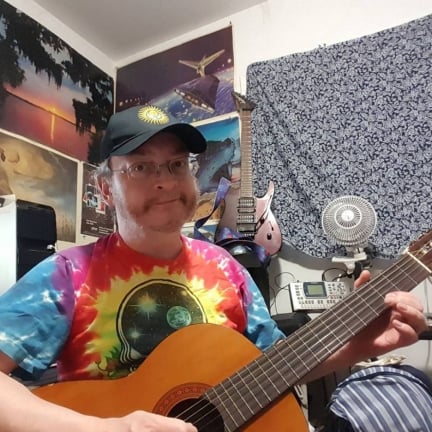
Honorary Collaborator / In Memoriam Joined: April 29 2006 Location: Atlantais Status: Offline Points: 29625 |
 Posted: June 01 2008 at 03:14 Posted: June 01 2008 at 03:14 |
||
|
Zappa's G-Spot Tornado?
|
|||
|
Released date are often when it it impacted you but recorded dates are when it really happened...

|
|||
 |
|||
chemo 
Forum Newbie 
Joined: May 25 2008 Location: Melbourne Status: Offline Points: 33 |
 Posted: May 31 2008 at 11:31 Posted: May 31 2008 at 11:31 |
||
|
It doesn't matter what Meshuggah's I signature is, because the song is unlistenable...
New Millenium Cyanide Christ however...
|
|||
 |
|||
Repner 
Forum Senior Member 
Joined: September 16 2007 Location: Scotland Status: Offline Points: 203 |
 Posted: May 31 2008 at 02:57 Posted: May 31 2008 at 02:57 |
||
|
Most complex time signature?
   |
|||

|
|||
 |
|||
Certif1ed 
Special Collaborator 

Honorary Collaborator Joined: April 08 2004 Location: England Status: Offline Points: 7559 |
 Posted: May 23 2008 at 06:15 Posted: May 23 2008 at 06:15 |
||
|
Haven't read the previous 6 pages, but surely the honour goes to Stravinsky's "Rite of Spring" - it's so rhythmically complex that it changes time signature in most bars - and much of the music isn't actually in the time signature indicated by the bars, as there's an overarching rhythmic pulse that "breathes" as the piece progresses. Following the score is almost impossible, unless you're highly musically trained - and even then it's hard. One bar contains the ony "real" 11/4 bar I've ever heard (ie, it cannot possibly be subdivided into groups of 2 or 3, it can only be 11) - Stravinsky's influence on Spinal Tap, perhaps?
|
|||
|
The important thing is not to stop questioning.
|
|||
 |
|||
NurseryCryme89 
Forum Groupie 
Joined: February 07 2008 Location: California Status: Offline Points: 55 |
 Posted: May 23 2008 at 04:35 Posted: May 23 2008 at 04:35 |
||
|
I just love cumplex music...
|
|||
 |
|||
Damjan 
Forum Newbie 
Joined: December 02 2007 Location: Canada Status: Offline Points: 33 |
 Posted: May 22 2008 at 23:17 Posted: May 22 2008 at 23:17 |
||
|
anything koenjihyakkei did on angher shisspa is insane, I could swear at some points its like 11/8 over 5/8 over 4/4.
|
|||
 |
|||
paulwalker71 
Forum Senior Member 
Joined: October 07 2005 Location: United Kingdom Status: Offline Points: 215 |
 Posted: May 20 2008 at 17:40 Posted: May 20 2008 at 17:40 |
||
|
There is a section on Thieves Kitchen song 'Mute', from their 'Head' album, that is in 29/8
Or so it is claimed here http://www.progreviews.com/reviews/display.php?rev=tk-head |
|||
 |
|||
nightlamp 
Forum Senior Member 

Joined: May 07 2007 Location: San Francisco Status: Offline Points: 163 |
 Posted: May 20 2008 at 14:41 Posted: May 20 2008 at 14:41 |
||
I have the sheet music in front of me. 4/4 common time. The proliferation of odd note groupings (septuplets, 11-uplets, 13-uplets, etc.) make it sound otherwise. Edited by nightlamp - May 20 2008 at 14:42 |
|||
 |
|||
BaldJean 
Prog Reviewer 
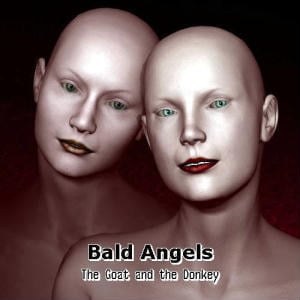
Joined: May 28 2005 Location: Germany Status: Offline Points: 10377 |
 Posted: May 14 2008 at 18:34 Posted: May 14 2008 at 18:34 |
||
I referred to an earlier post in the thread and forgot to quote it |
|||
 A shot of me as High Priestess of Gaia during our fall festival. Ceterum censeo principiis obsta |
|||
 |
|||
MikeEnRegalia 
Special Collaborator 
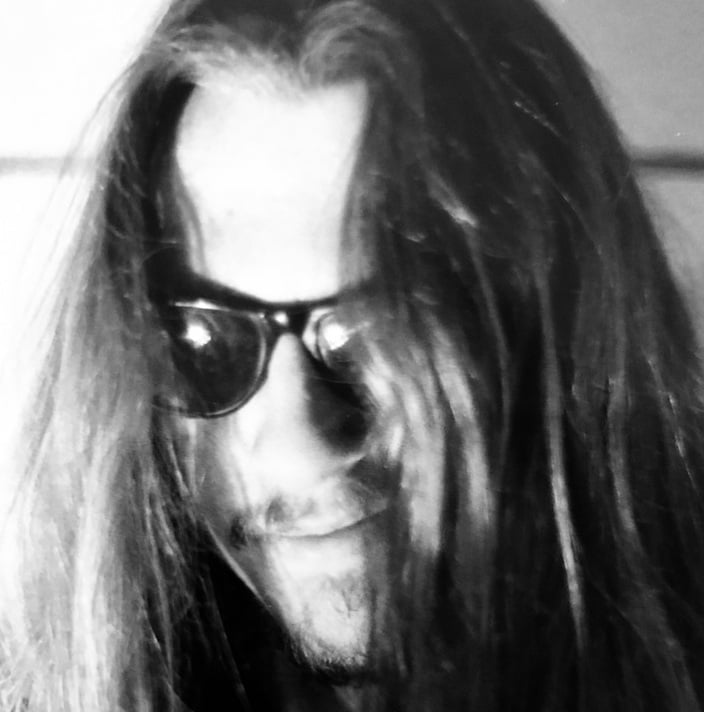
Honorary Collaborator Joined: April 22 2005 Location: Sweden Status: Offline Points: 20618 |
 Posted: May 14 2008 at 17:02 Posted: May 14 2008 at 17:02 |
||
|
^ what did Meshuggah ever do to you?
|
|||
 |
|||
BaldJean 
Prog Reviewer 

Joined: May 28 2005 Location: Germany Status: Offline Points: 10377 |
 Posted: May 14 2008 at 15:18 Posted: May 14 2008 at 15:18 |
||
|
try Roman Bunka's album "Dein Kopf ist ein schlafendes Auto" and listen to "Glowin'". also listen to Embryo's album "Embryo's Reise". Meshuggah is simple compared to these rhythms
|
|||
 A shot of me as High Priestess of Gaia during our fall festival. Ceterum censeo principiis obsta |
|||
 |
|||
Madklikor 
Forum Newbie 
Joined: July 21 2006 Status: Offline Points: 8 |
 Posted: May 14 2008 at 14:29 Posted: May 14 2008 at 14:29 |
||
|
What monster?

|
|||
 |
|||
Abstrakt 
Forum Senior Member 
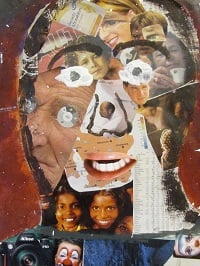
Joined: August 18 2005 Location: Soundgarden Status: Offline Points: 18292 |
 Posted: May 14 2008 at 14:04 Posted: May 14 2008 at 14:04 |
||
|
Hey, someone brought back this little monster!
|
|||
 |
|||
Madklikor 
Forum Newbie 
Joined: July 21 2006 Status: Offline Points: 8 |
 Posted: May 14 2008 at 13:54 Posted: May 14 2008 at 13:54 |
||
|
My long answer has been erased with the attack, I'm not writing everything again. A few points :
- The questions here : "how do I write these musical phenomenons?" and "what is useful to write?", not "what does exist?". And there are no rules, it depends of the cases. With complex rhythm structures, sometimes time signatures are useless, sometimes they're a way to emphasize structure, sometimes they can be point of reference... which leads to : - Rock music isn't classical music. Rock is about repeated riffs, drum patterns, cycles... You can write stuff in rock music that you wouldn't write in classical music, or write in a different way. If the main riff in a song is repeated 32x and is in 3+4+4+3+4/8, I don't see any problems to write it that way, or 19/8, or 9/4, instead of 3/8+4/8+4/8+3/8+4/8, or whatever. Time signature could only indicate duration here. - That DT song has no 11/4, 17/16 and stuff (the only "unusual" time signature is 15/8), so the Stravinsky comparaison does hold up (they share some rhythmic means). Fanciful time signatures come from bad transcriptions. Instead of lecturing people, you could have simply corrected the transcriptions (I don't think 9/16+12/16+8/16 (Mars volta's Cygnus) would seem less "complex" than 27/16 to anyone). - "Time signature" does not equal "meter". - What Bartok example do you think of? - If you're just trying to say that 27/16 is a stupid way to note a musical phenomenon, there is no need to tell everyone they live in some "magical world", because most of time signatures in this thread are simple and coherent. I think the answer you gave me here isn't quite the same you gave to other people before, it sounds to me like you just wanted to show off and lecture people. Edited by Madklikor - May 14 2008 at 14:27 |
|||
 |
|||
Trademark 
Forum Senior Member 
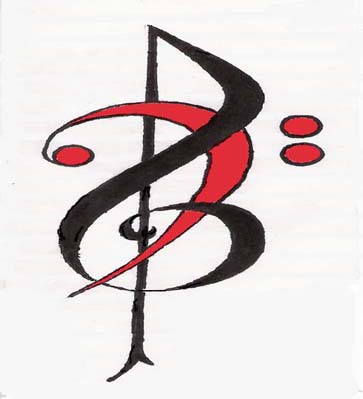
Joined: November 21 2006 Location: oHIo Status: Offline Points: 1009 |
 Posted: May 13 2008 at 23:31 Posted: May 13 2008 at 23:31 |
||
|
Its funny because when I see this "Please, stop talking like you know something when you obviously don't."
It really doesn't follow that the next statement would be this: "I'm not saying that everything you wrote is wrong" followed later by "I do agree that there is no NEED to write the "time signature" in some of these cases" Which is it? It was crystal clear to me from your first comment that you did consider it to be wrong, and nothing I stated was wrong in any way. What changed your mind? Meters like 27/16 and so forth, are false and artificial (is that better than do not exist?) because they cannot be perceived aurally in music. The human brain breaks pulses or beats down into groupings of 2, 3, or 4, and meter (which is really what we are talking about) is established only by repetition of discernable patterns. In short, without the aid of the paper sheet music the brain will not remember the patterns that add up to 27 and will not "count" to 27 over and over again to establish the pattern and rise to the level of being meter according to the accepted definition. Speaking of definitions, the Grove definition reads: "Meter is the grouping of beats in a regularly recurring pattern (the bar or measure) defined by accentuation. At a higher level than the beat and in more complex ways, meter (whether explicitly marked or only sensed) provides the temporal framework of the music within which rhythm is established and perceived." The Harvard Dictionary of Music meter is: "The pattern in which a steady succession of rhythmic pulses is organized", and it is "characterized by the regular recurrence of such patterns." These definitions are exactly the same. The Grove gives more detail, but says the exact same thing. Where is the difference you mention? Neither the DT example nor the Stravinsky meet the accepted definition for meter as there is no repetition. Both are highly rhythmic, but non-metric and so the use of meter signatures is superfluous and confusing to players attempting to read from printed music. There is only a steady pulse and random groupings of 2, 3, and 4 beat patterns which do not repeat. Orchestras often have no more than 4-6 hours rehearsal time for incredibly complex and difficult pieces of music. if the composer handicaps them by writing foolishness like 19/16 or whatever, he's shooting himself in the foot because he'll get a poor performance AND no more work from that particular conductor. Music performed from memory gives a little more latitude, but not much. Make the player's job harder (for no other reason than to stroke your own ego) and you won't have your music performed. I assume that this is the example given that you're comparing to Stravinsky: "In order, each entry written once: 4/4, 7/8, 3/4, 13/16, 15/16, 17/16, 14/16, 5/4, 6/8, 2/4, 5/8, 11/4, 9/4, 7/16, 6/16, 5/16, 10/16, 9/8, 15/8, 12/16, 16/16 (3+3+3+3+2+2), 3/8." The Stravinsky comparison doesn't hold up too well for a couple of reasons. I'll try to explain without lecturing.  The first is "theoretical". In the Stravinsky example there are no beat groupings with more than 9 beats. For some reason which I'd have to do some research to find more information about, the abiilty to process more beats than this drops off sharply as the top number in the meter sig. rises. 9 is OK, 11 and 13 get rough, and anything above that would be considered a no-no. I wrote a piece about 15 years ago with a longish section in 13/8. Every time this piece has been performed (half dozen or so) the conductors asked me to "re-bar" the 13/8 section into alternating measures of 7/8 and 6/8 because the players couldn't stay on track through the section. It made perfect sense to me on paper, but it was a performance problem every time. When I finally gave in and made the changes the performances improved dramatically; everyone stayed together. Players won't count and conductors can't conduct (especially if the players won't count) with meter sigs like that. They get out their pencils and re-do the score which makes them annoyed with the composer for needlessly wasting their rehearsal time. The publisher I have for my music now would laugh me out of the building if I put something written in 17/16 on his desk. As a composer you (I) might as well accept reality. The first is "theoretical". In the Stravinsky example there are no beat groupings with more than 9 beats. For some reason which I'd have to do some research to find more information about, the abiilty to process more beats than this drops off sharply as the top number in the meter sig. rises. 9 is OK, 11 and 13 get rough, and anything above that would be considered a no-no. I wrote a piece about 15 years ago with a longish section in 13/8. Every time this piece has been performed (half dozen or so) the conductors asked me to "re-bar" the 13/8 section into alternating measures of 7/8 and 6/8 because the players couldn't stay on track through the section. It made perfect sense to me on paper, but it was a performance problem every time. When I finally gave in and made the changes the performances improved dramatically; everyone stayed together. Players won't count and conductors can't conduct (especially if the players won't count) with meter sigs like that. They get out their pencils and re-do the score which makes them annoyed with the composer for needlessly wasting their rehearsal time. The publisher I have for my music now would laugh me out of the building if I put something written in 17/16 on his desk. As a composer you (I) might as well accept reality. So getting back to Igor, he was well within the tested and accepted limits (the limits are not arbitrary, there's actual research to back up common practice) of notation with that segment of Le Sacre. The DT example, on the other hand, has 9 (out of 22) "measures" in sigs with top numerals over 9, and this is the real problem with it. To be readable (notice I did not say playable) those would need to be broken down further and really it would be best to simply leave them out as is common practice in the art-music world. (exceptions exist for everything and you may be able to find a better example. Try the Bartok Sonata for 2 pianos & Percussion or Music for strings, Percussion & Celsta. I have the scores at the moment and it might be fun.) Here's the other thing which you may or may not know about Le Sacre. In his handwritten sketches for the piece there were no bar lines. Stravinsky originally conceived this section without meter signatures. Why then, did he put them in the score for you to quote? He did so at the specific request of Vaslav Nijinsky, the choreographer for the Ballet Russe for whom the piece was originally composed. Nijinsky needed the numbers in order to plan out his choreography. The dancers have to count steps since they cannot have the music in front of them when they perform and the choreography for Le Sacre was unbelievably difficult (at least for its time). Through the rehearsals and even during the disastrous 1st performance in Paris in 1913 he would stand in the wings off stage and shout out the numbers to the dancers to help THEM keep their place. The orchestra would have been just fine without them and Stravinsky knew it. The main reasons for the use of these artificial meters was summed up very well by another poster early on in the thread, "Maybe it's also ego, you know, the more complex you write a time signature the more impressive you seem to others." That IS the reason. The complete and total truth of that statement is born out by the very existence of the thread. If the schoolboys weren't impressed by the big numbers... Well boys, "Here's your sign". Edited by Trademark - May 14 2008 at 12:58 |
|||
 |
|||
Post Reply 
|
Page 123 6> |
| Forum Jump | Forum Permissions  You cannot post new topics in this forum You cannot reply to topics in this forum You cannot delete your posts in this forum You cannot edit your posts in this forum You cannot create polls in this forum You cannot vote in polls in this forum |